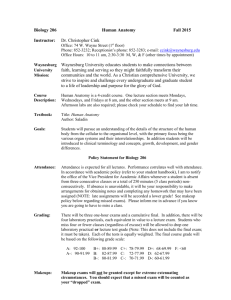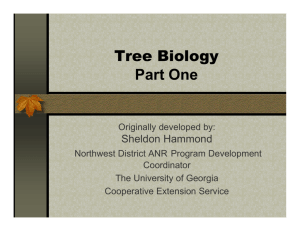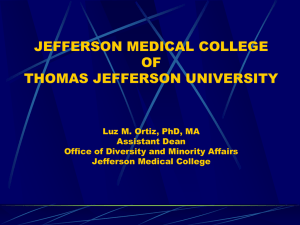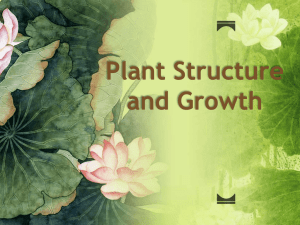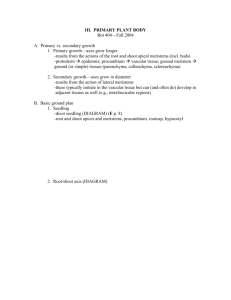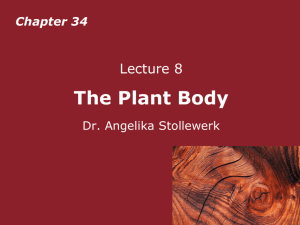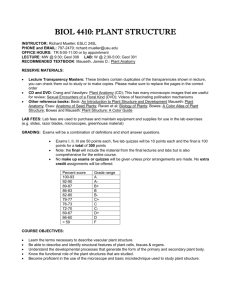Biology D Plant Structure and Development
advertisement
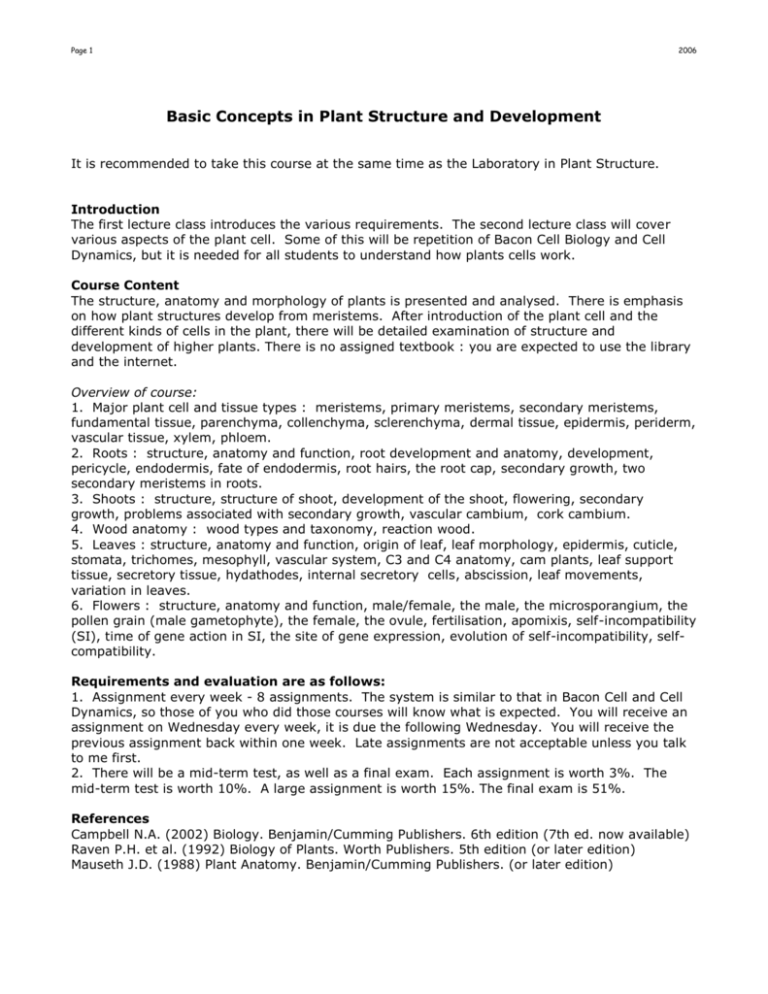
Page 1 2006 Basic Concepts in Plant Structure and Development It is recommended to take this course at the same time as the Laboratory in Plant Structure. Introduction The first lecture class introduces the various requirements. The second lecture class will cover various aspects of the plant cell. Some of this will be repetition of Bacon Cell Biology and Cell Dynamics, but it is needed for all students to understand how plants cells work. Course Content The structure, anatomy and morphology of plants is presented and analysed. There is emphasis on how plant structures develop from meristems. After introduction of the plant cell and the different kinds of cells in the plant, there will be detailed examination of structure and development of higher plants. There is no assigned textbook : you are expected to use the library and the internet. Overview of course: 1. Major plant cell and tissue types : meristems, primary meristems, secondary meristems, fundamental tissue, parenchyma, collenchyma, sclerenchyma, dermal tissue, epidermis, periderm, vascular tissue, xylem, phloem. 2. Roots : structure, anatomy and function, root development and anatomy, development, pericycle, endodermis, fate of endodermis, root hairs, the root cap, secondary growth, two secondary meristems in roots. 3. Shoots : structure, structure of shoot, development of the shoot, flowering, secondary growth, problems associated with secondary growth, vascular cambium, cork cambium. 4. Wood anatomy : wood types and taxonomy, reaction wood. 5. Leaves : structure, anatomy and function, origin of leaf, leaf morphology, epidermis, cuticle, stomata, trichomes, mesophyll, vascular system, C3 and C4 anatomy, cam plants, leaf support tissue, secretory tissue, hydathodes, internal secretory cells, abscission, leaf movements, variation in leaves. 6. Flowers : structure, anatomy and function, male/female, the male, the microsporangium, the pollen grain (male gametophyte), the female, the ovule, fertilisation, apomixis, self-incompatibility (SI), time of gene action in SI, the site of gene expression, evolution of self-incompatibility, selfcompatibility. Requirements and evaluation are as follows: 1. Assignment every week - 8 assignments. The system is similar to that in Bacon Cell and Cell Dynamics, so those of you who did those courses will know what is expected. You will receive an assignment on Wednesday every week, it is due the following Wednesday. You will receive the previous assignment back within one week. Late assignments are not acceptable unless you talk to me first. 2. There will be a mid-term test, as well as a final exam. Each assignment is worth 3%. The mid-term test is worth 10%. A large assignment is worth 15%. The final exam is 51%. References Campbell N.A. (2002) Biology. Benjamin/Cumming Publishers. 6th edition (7th ed. now available) Raven P.H. et al. (1992) Biology of Plants. Worth Publishers. 5th edition (or later edition) Mauseth J.D. (1988) Plant Anatomy. Benjamin/Cumming Publishers. (or later edition)

